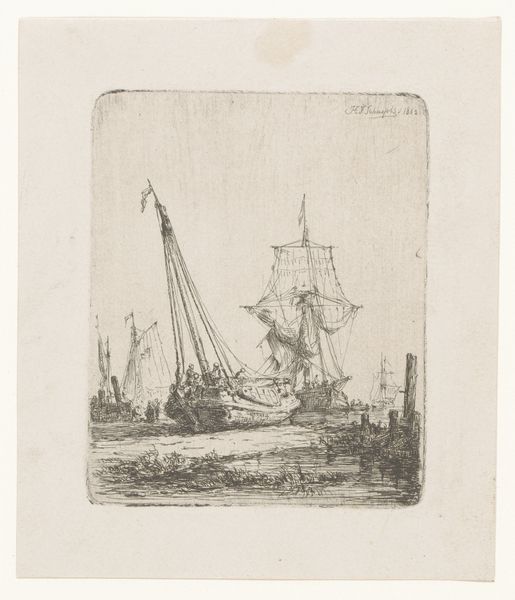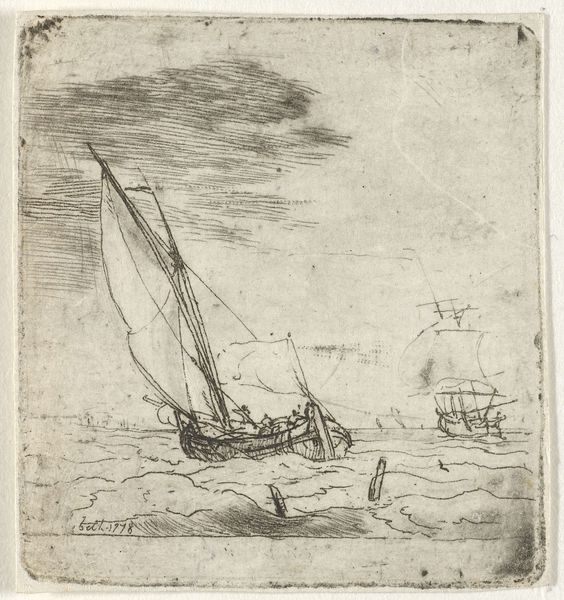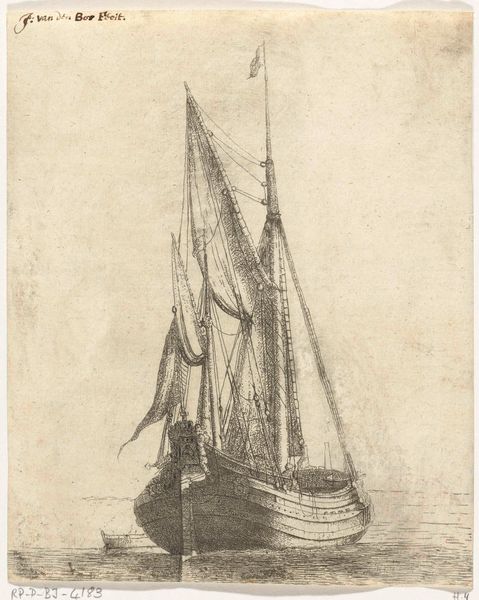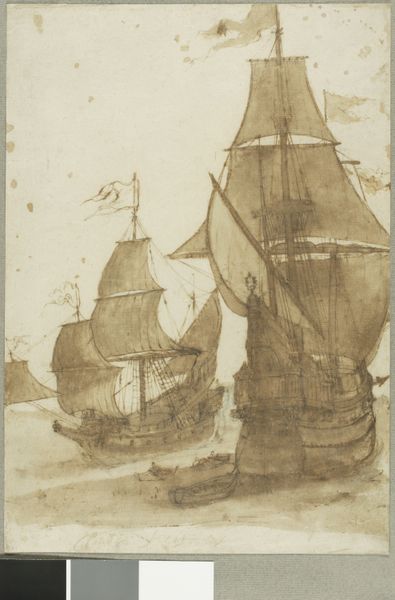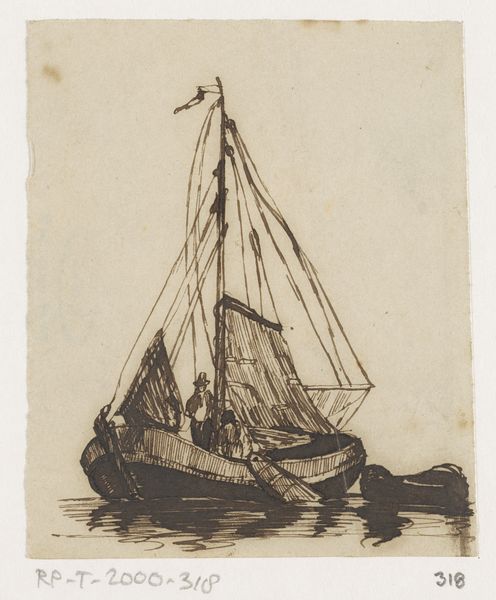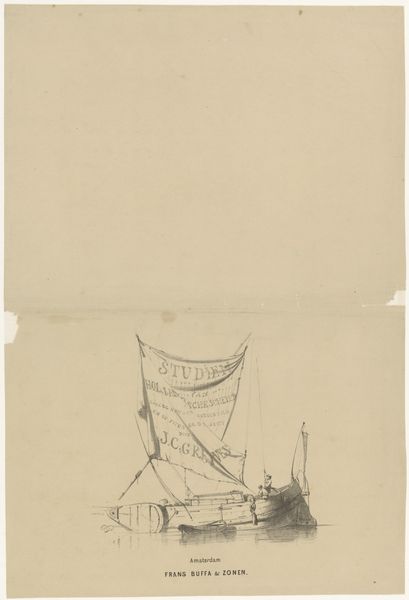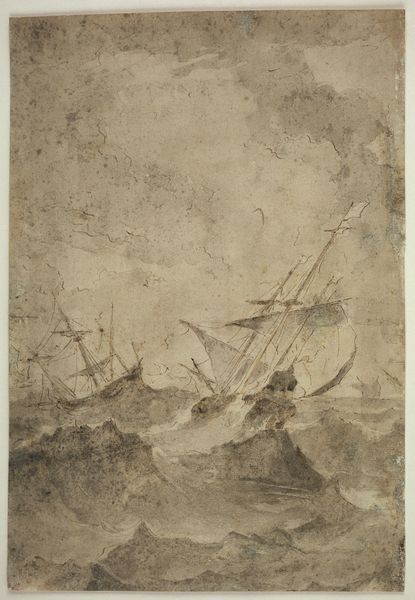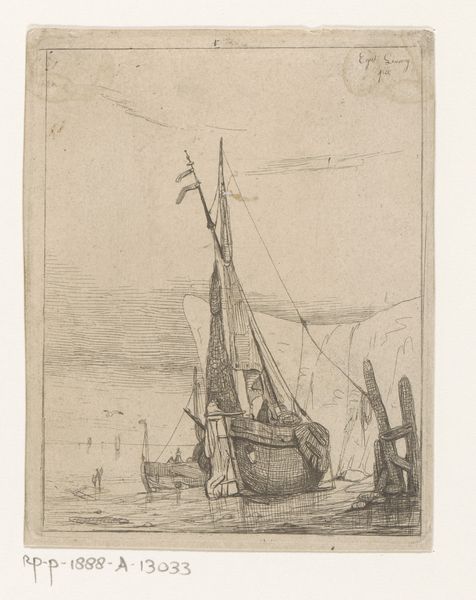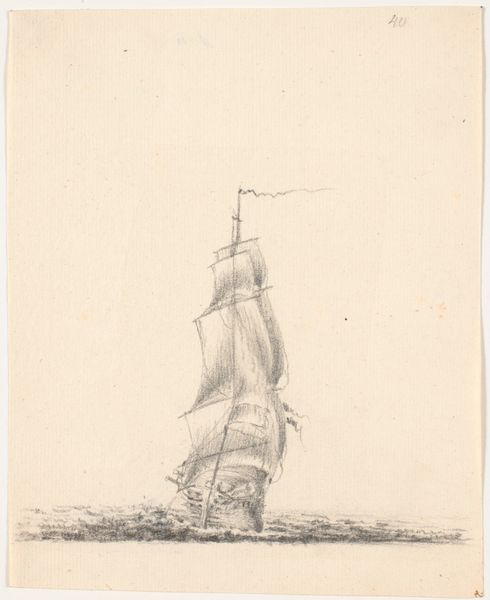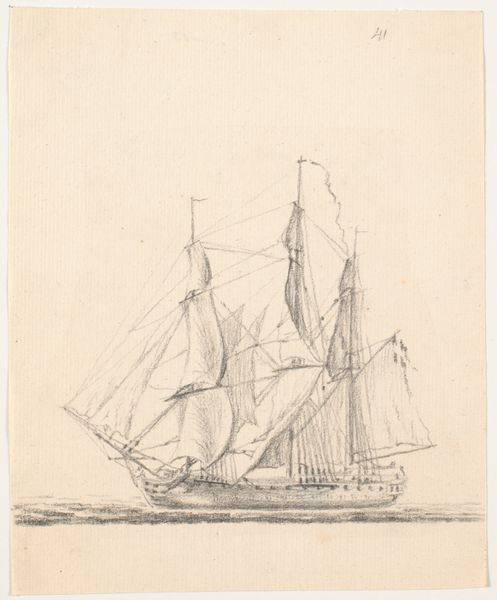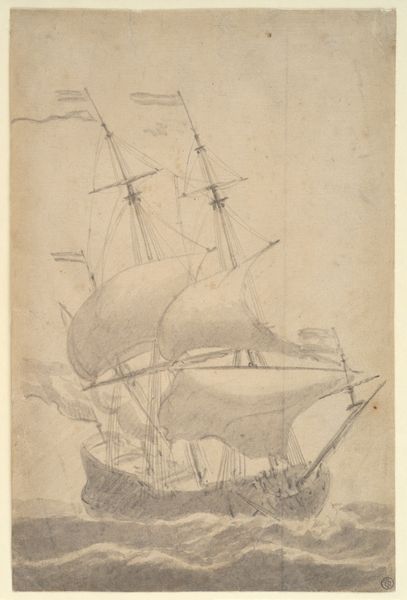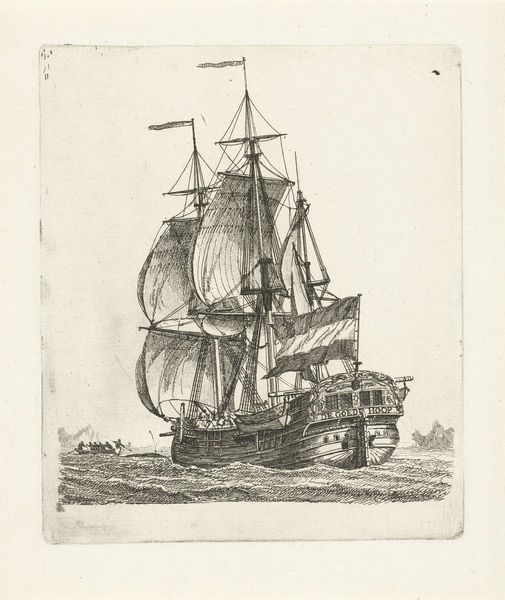
drawing, print, etching, paper, ink
#
drawing
#
ink painting
# print
#
etching
#
landscape
#
paper
#
ink
#
romanticism
#
realism
Dimensions: 70 × 62 mm (image); 87 × 69 mm (sheet)
Copyright: Public Domain
Curator: What strikes me first is the fragility of this image, its delicate texture and faded tones. It’s called "A Vessel Under Sail" by Jean-François Millet, made around 1847, and is rendered with ink on paper. A small etching, isn’t it? Editor: It is small, yet feels grand. I’m thinking about journeys, both physical and psychological. It gives me a melancholic feeling—a lone ship, bravely pushing against a perhaps unforgiving sea, maybe toward an uncertain horizon? Curator: Yes, there's definitely a sense of Romanticism inherent to it. Ships in art have long signified exploration and discovery. Millet's choice to depict the ship in what appears to be rough waters…the uneven lines could reference the turbulence. It hints at the internal and external challenges. Editor: The way the ship sort of dissolves into the sea and sky feels so expressive. Maybe it represents vulnerability or a surrender to the vastness of nature, a kind of cosmic loneliness perhaps. Also I get the sense that it could be fading into memory, that what we see here may not exist for very long. Curator: Precisely. Vessels carry potent cultural associations and, in Millet's work, the theme of hardship recurs. He wasn't just painting a ship, he was suggesting a relationship between man and the environment, both beautiful and imposing. Think of the psychological weight of the symbol when seen in a rural context… the call for voyage and trade. Editor: I feel as though the sketchy quality also suggests the fleeting nature of impressions, or dreams. A beautiful rendering of the liminal, you know? Like trying to hold onto a memory just as it fades. What remains are suggestive sketches—which in turn suggest that whatever the vessel carries—the journey or the burden—these things never leave us, though their clarity dissipates. Curator: I agree, and thinking of how memory works it helps reframe Millet’s work. His commitment to observing everyday life—seen in his peasant subjects, which are more widely known than these marine scenes. It creates this quiet drama, that links internal and external, remembered and lived… It all adds another dimension. Editor: I see it now, thanks. It’s that simple rendering that holds so much meaning. I find that beautiful and somewhat heartbreaking. Curator: Agreed. It makes you pause and consider the weight behind simple lines, how an artist’s marks echo something deeply human.
Comments
No comments
Be the first to comment and join the conversation on the ultimate creative platform.

